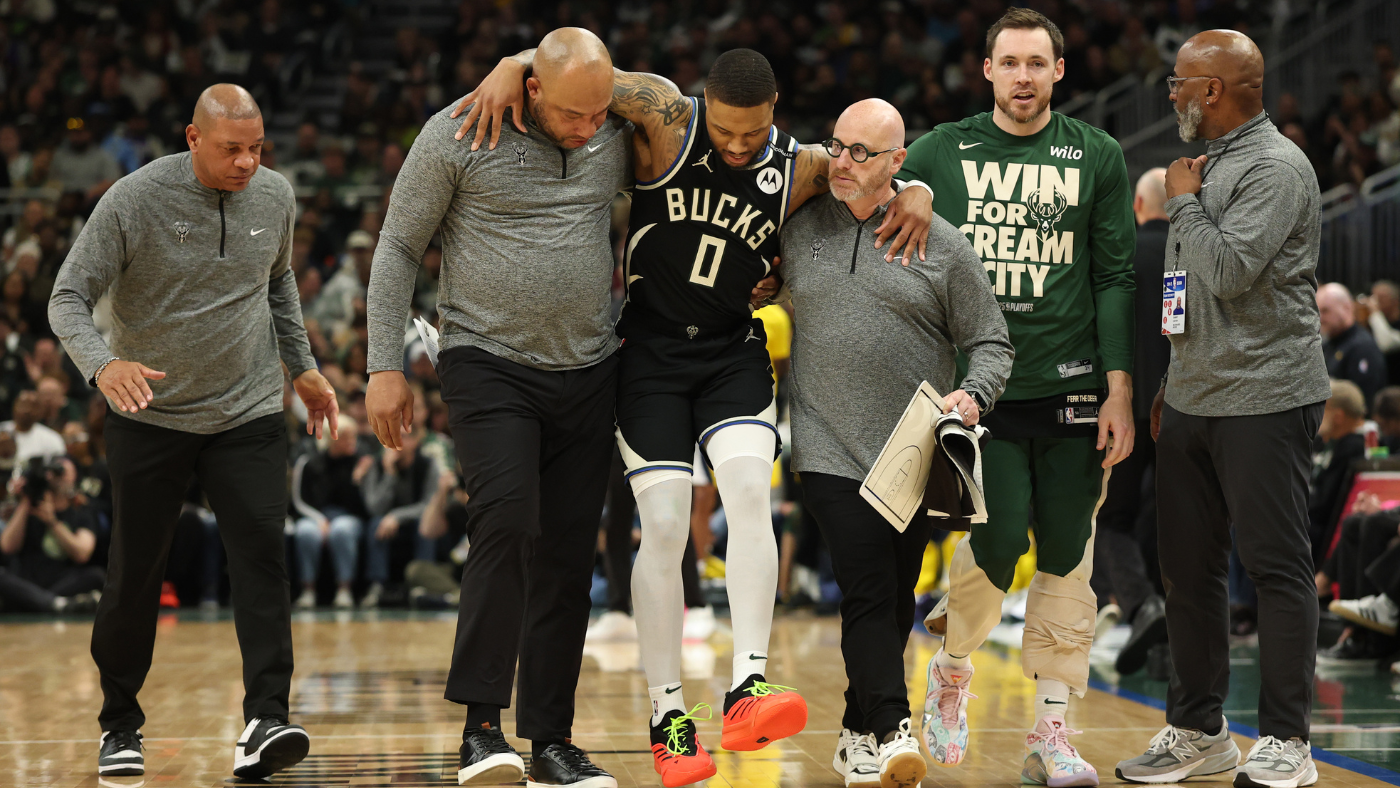Damian Lillard has a bit of a history of getting punished for doing the right thing. For years he was the face of loyalty in the NBA. He spent the bulk of his prime watching his contemporaries link up on the team of their choice and compete for championships. One of those contemporaries, Kevin Durant, even openly mocked Lillard’s teammate, CJ McCollum, for thinking the Portland Trail Blazers could contend for one. But Lillard held on and held on, giving the Blazers every opportunity to do right by him so he could compete for a title the old fashioned way. Outside of a single, fluky run to the Western Conference finals, he never came all that close.
When he eventually decided to dip his toes into player empowerment waters, he found them choppier than many of his fellow superstars had. He wanted to play for the Miami Heat and only the Miami Heat. He likely assumed, given the success so many similar players had in forcing trades to the team of their choosing, that he would eventually get his way. Obviously, he did not.
The Blazers refused to accept Miami’s offer. So Lillard got sent to Milwaukee. A setback, but not necessarily an overwhelming one. He’d never had a teammate quite like Giannis Antetokounmpo and he could at least contend in Milwaukee. Or at least, that’s how it seemed.
Damian Lillard injury: Bucks star feared to have torn Achilles in Game 4 vs. Pacers, per report
Jack Maloney

It turns out that the coach that Antetokounmpo pushed for before Lillard’s arrival, Adrian Griffin, wasn’t ready for the job. He was fired after 44 games. Lillard’s former coach in Portland, Terry Stotts, left the Bucks before the 2023-24 season began after a practice dispute with Griffin. Khris Middleton, Antetokounpo’s sidekick during his 2021 title run, couldn’t stay healthy. Brook Lopez, the defensive anchor on that team, started to age quickly. The contender Lillard thought he was joining wound up losing in the first round to the Indiana Pacers.
Facing the Pacers in the first round again this year, they were well on their way to doing so again. Lillard would have been entirely justified in skipping the series for medical purposes. Less than six weeks ago, Lillard was sidelined due to a deep vein thrombosis in his right calf. This is a health situation that transcends basketball — the most severe cases can end careers. The best-case outlook is usually a recovery that takes between six months to a year. But Lillard, wanting to give his team a fighting chance, made a historic recovery and was able to return for Game 2 against Indiana.
He wasn’t his typical self, he could hardly be expected to be. In an era defined by load management and injury caution, Lillard did everything in his power to give his undermanned Bucks team, one nobody still considered a viable championship contender, a sliver of a chance against the team that knocked them out last year. His reward for that, sadly, was seemingly a career-altering injury.
In the first quarter of his team’s Game 4 loss to fall behind 3-1 in the series, Lillard went to chase an offensive rebound, but collapsed to the court and grabbed his lower left leg. He was immediately helped off of the court, and the outlook is grim. According to Chris Haynes, there is fear that he has torn his left Achilles tendon. And after the game, Bucks coach Doc Rivers told reporters that Lillard’s prognosis is “not very promising.”
Medically speaking, there is no connection to the blood clot in his right calf beyond perhaps any loss of conditioning that came as a result of sitting out for more than a month. But if Lillard had done what many other players would have, if he would have prioritized caution in his recovery and taken his time, he wouldn’t have even been on the court Sunday to suffer the injury.
He wanted to give his team a chance, and he was punished for it.
“The guy tried to come back for his team. I just felt bad for him,” Rivers said. “This is a tough one. Blood clot followed by this. It’s just tough. He’s just such a great dude — on a basketball level, but more importantly as a teammate and as a father and all that stuff. Nobody deserves it, but golly, you just look at him — and that’s why I feel bad. It’s just tough.”
What’s next for Damian Lillard?
Lillard’s career isn’t over. Players can return from a torn Achilles. It’s just rare that they do so as the same player. Kevin Durant and Dominique Wilkins came as close as anyone ever has to doing so, but they were both big forwards. Lillard is a small guard, reliant on his speed and agility. History is unkind to guards who suffer this injury. Lillard is 34. That’s the same age Kobe Bryant was when he tore an Achilles in 2012. Bryant was never the same after that. Neither was Chauncey Billups, who tore his Achilles at 35 and played just 41 more games in the NBA.
There have been unusually fast returns from torn Achilles tendons. Lillard’s former teammate, Wes Matthews Jr., is the best example. He suffered the injury in March 2015 and was able to start the season opener for the Dallas Mavericks that October. He was never quite the same player, though, and he is an outlier. Durant sat out the entire 2019-20 season. Klay Thompson took a year as well. That’s the norm.
If Lillard misses the next year, he’ll be back in time for opening night as a 36-year-old in 2026. He’ll be playing for a Bucks team that probably looks very different. Only three other Bucks players are currently under contract for the 2026-27 season: Tyler Smith, Kyle Kuzma and Antetokounmpo. Given the hints Antetokounmpo has made about wanting to compete for championships again and the rumors that have followed, it’s not clear if he’ll be willing to wait a year for a possibly compromised Lillard to return.
It’s possible that we’ve seen the last of the superstar version of Lillard we’ve spent the past decade-and-a-half watching. He’ll probably be a different player, in some fashion, when he makes it back. Different probably means worse. It doesn’t have to mean bad. Lillard is thankfully so good that he would need to decline pretty precipitously before he’d cease offering value to a team. Shooting ages well, at least, and Lillard does it better than anyone. Chris Paul barely moves and he just played all 82 games as a 39-year-old.
It’s possible Lillard has more great basketball left in him. Hopefully he does. He deserves a happier final chapter than this.











